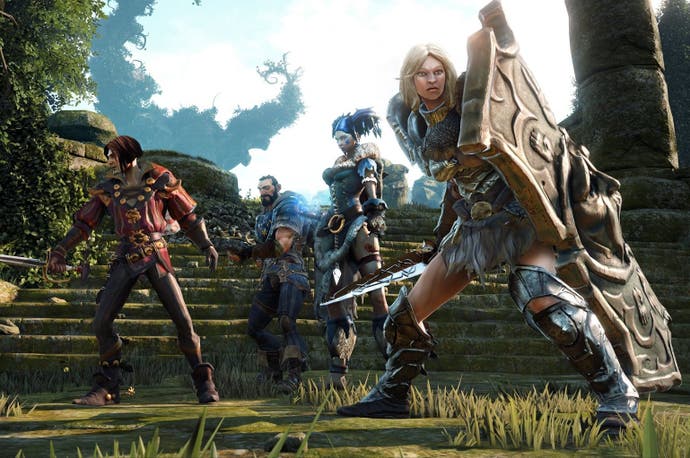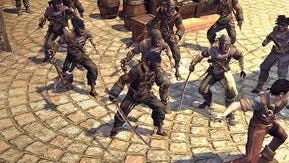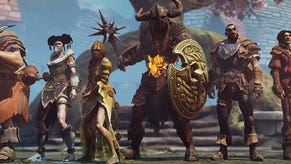Fables Legends is the Lionhead game you always wanted, but never asked for
Imagine if Left 4 Dead's AI director wasn't AI.
Saving the world is easy. Conquering it, however, is hard. The former I've done in thousands of games, but the latter? That's the tricky part. At least that's how it is in Fable Legends, Lionhead's asymmetrical third-person brawler/RTS hybrid that cleverly mixes team-based co-op with tactical top-down defence.
Chances are you've seen the pitch: four players band together in a third-person hack-and-slash dungeon crawl while another player acts as the antagonist, sprouting foes to thwart these pesky would-be heroes. Having played from both sides of the divide, what struck me most about Fable Legends is how fun, balanced, and different each role is.
Let's start with the villain, as that's the most aberrant role from a design perspective. At a glance, it might look like this tyrant is simply sprouting AI enemies that will succeed or fail on their own accord. In truth, the villain plays a much more hands-on role in this war. Villain designer Lewish Brundish likens this role more to Dungeon Keeper than a typical RTS, and I can see why. For starters, you can set waypoints for your troops using different face buttons as hotkeys. Beyond that, you have direct control over each unit's special attack.

For example, a type of fire-arrow archer has few hit points, but deals lots of damage from afar, so its best to tuck him into some back corner of the map. From there, you can dictate his special attack wherein he launches an aerial attack that hurts everything in a wide red glowing radius. Another type of archer's special attack shrouds part of the playing field in fog, which is especially useful when spread over an area with land mines (which the villain gets to set). A fiendish melee character called the Puck is deadly with knives, but his special attack turns this dastardly fellow invisible - and not like Halo invisible, but actually invisible where his whereabouts can only be detected by his footprints.
Lionhead is adamant that it wants the game to control well with the gamepad, and indeed some smart concessions have been made to this style of play. Each hero can be targeted with a flick of the D-pad, so when one player is almost out of the picture it's easy to find them and launch everything you've got at them. Furthermore, the villain can directly influence the environment by raising and lowering spiked gates at their discretion. This is useful for keeping heroes apart and even more useful for injuring them as they walk by unawares.
Doling out enemies will be tied to a budget, but it's not yet determined how this will be balanced. In the demo, the villain's forces are all predetermined, but that's only to simplify what's an exceptionally complex role for trade show purposes.
Playing my first round as a villain, I nearly succeed in defeating all four heroes before the demo ends, but fail at the 11th hour when one of their forces gets a last minute bout of courage and revives their teammates before my mini-boss-like ogre can wipe out the last surviving member.
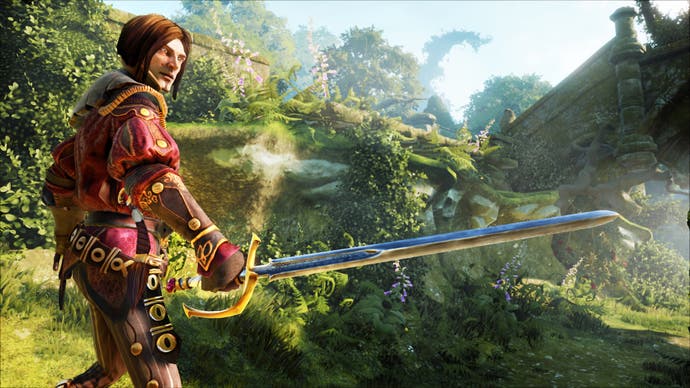
From the vantage point of the villain, it seems like playing as a hero would be easy. Micromanaging all my forces from on high is tough work - even if they do have some AI to fall back on when my attention is diverted elsewhere. I'm surprised to find that switching roles doesn't make things any easier.
For my next game, I assume the role of an ice sorceress named Winter. Teams with a ranged warrior, melee brawler, and healer, we storm the gates I once tried so valiantly to defend.
The heroes control much more conventionally with options to run, evade, use normal and heavy attacks, and cast a variety of spells tied to the face buttons with various magic costs associated with them. As Winter, my usual attack is to spray a flurry of frost, while my heavy attack is to launch an ice spear, and my spells unleash extremely powerful radial or directional snow attacks. Winter doesn't do too much damage on her own, but she can freeze foes, making them immobile and vulnerable to shattering by my teammates. As such, it's best to stick together.
It's amazing just what a difference a perspective shift can make. Suddenly the fire archer that seemed like he'd be so easy to find becomes a real pain in my side as a run around the map trying to suss out his location. The pointy gates sprinkles around the battlefield give me pause in case the villain is hanging around from their ivory control room just waiting to spring these barriers on me, and that deceptive Puck has me on edge.
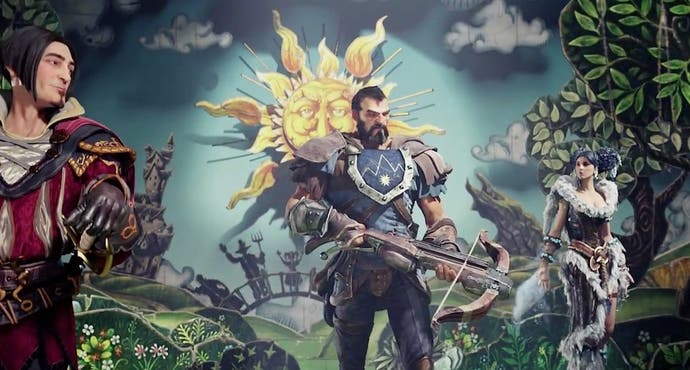
One neat little addition to the co-op campaign is the heroes can talk to one another, giving them something to do while the villain sets up each map for a brief spell. Each character has a variety of context-sensitive dialogue to spout out based on where they are in the story, which gives the proceedings a more story-focused feel than the typical dungeon crawler.
My teammates and I win as the heroes, but this ostensibly has as much to do with the heroes being overpowered as it does the villain having a steeper learning curve. The four-on-one team-based gameplay puts me in mind of Left 4 Dead with its highly touted "AI director", only Fable Legends asks "what if that AI director wasn't AI?" It's a question worth asking and the results are effectively chaotic, giving both sides the constant feeling that the grass is always greener.
The Fable series has seen something of a drubbing since Fable 3 failed to live up to its lofty expectations and the spin-offs Fable Heroes and Fable: The Journey failed to garner much critical acclaim, so one could be forgiven for not mustering much excitement over another Fable spin-off. But that would be a mistake. Fable Legends is a sophisticated take on merging co-op dungeon crawlers, MOBAs and strategy games into one relatively accessible asymmetrical console-focused package. More playtime will be needed to ensure Lionhead has effectively balanced its sprawling set of mechanics just right, but based on my maiden battle from both the heroes' and villain's perspective, it seems like this could be the first Fable game that not only lives up to its hype, but actually surpasses it.
